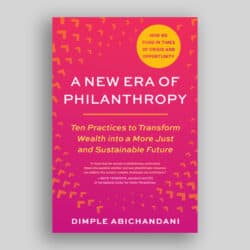Contributing Citizens: Modern Charitable Fundraising And The Making Of The Welfare State, 1920–66.
By Shirley Tillotson. UBC Press, Vancouver, BC
isbn 978-0-7748-1473-7
In Contributing Citizens, professor Shirley Tillotson of Dalhousie University provides an insightful look at the rise of the Community Chests. The predecessors of today’s United Way agencies, the Chests were federations of welfare agencies that engaged in united fundraising appeals to their local communities. By mining the historical archives, Tillotson presents the captivating story of the Chests in three cities (Ottawa, Vancouver, and Halifax) through letters, newspaper articles, advertisements, and other evidence.
Overall, the book introduces the reader to rich, well-drawn characters that animate the historical documents with real-life personalities and power struggles. By examining this particular period—spanning almost five decades around World War II—and unpacking the story of the Chests in such great detail, Tillotson tells the tale of both the modernization of Canadian charitable fundraising and the exponential growth of Canada’s welfare state.
Unexpectedly, we find that charitable giving and Canada’s new social welfare system were not in opposition to each other—as is often assumed. Instead of competing for a finite pie of funding, Canada’s charities and public sector social service agencies grew alongside each other. Modernizing in one sector led to innovations in the other. Messaging to inspire increased giving also justified the expanding income tax. Although debates about the tax system and the charitable base spun off in different directions in different eras (sometimes undercutting each other), the two threads ultimately took the same direction. And, all along, the Chests tried to ensure that one kind of “contribution” did not usurp the other:
The making of the welfare state and the development of charitable giving were in fact both parts of a common exercise in defining needs, determining appropriate recourses, and organizing the financing and administration of the response to needs. They were related elements in an evolving culture of contributions. (p. 131)
Characters like Horace L. Brittain, director of the tax policy advocacy organization Citizens’ Research Institute of Canada, and A. Handfield Whitman, Halifax business leader, played key roles in the debates about Canada’s changing tax system. Yet they were also leaders at the Chests, representatives on state and federal government panels, advisors to the welfare agency members of the Chests, and individual donors themselves. Chapter 1 makes the connections among the sectors very clear through deft storytelling.
In Chapter 2, Tillotson connects the emerging debate about expanding the income tax to the changing techniques of fundraising at the Chests. She clearly identifies five themes and discusses how developments in both areas complemented each other: the cost-effective collection of funds; accounting controls; data collection about donors and taxpayers; “ability-to-pay” measures; and base-broadening efforts. These five themes demonstrate that fundraising and the welfare state are and always have been interrelated.
Tillotson includes analysis of fascinating advertisements in Chapter 3. Relying on often contradictory messages, the ads attempt to appeal to different audiences—sometimes highlighting the prestige and recognition that flow from philanthropy, sometimes emphasizing the moral obligation to give to the Chests using shaming techniques.
Tensions emerged around gender, particularly in the Chests’ messaging about giving as a feminine or masculine endeavour. For example, some of the ads cast philanthropy as “manly” in order to expand the Chests’ image beyond the realm of women’s work; yet the Chests also relied on women leaders as volunteer fundraisers and agency directors and utilized very feminine imagery in other ads. Beyond gender, we find that the Chests’ fundraising efforts also exposed class conflict and ethnic tension, particularly with regard to Vancouver’s Catholic and Chinese communities.
In Chapter 4, Tillotson examines the “politics of inclusion” from 1927-52. English versus French communities, Catholics versus Protestants—through conflicts like these, the three cities grappled with questions like: Is everyone paying their fair share? Who should contribute for the greater good? What does it mean to be a citizen? Should funds be allocated along sub-community lines? Contribution—whether to the State or to the Chests– equalled power, access, and democratic representation.
The early 1930s were a turning point in terms of the visibility of giving by the diverse groups of the era. The Chests used a vision of universal citizenship or a “united moral community” beyond race, religion, or language in order to broaden their giving base and begin appealing beyond the mainstream—much as the United Way appeals so successfully to Canada’s visible minorities in the present-day.
The Chests’ wartime appeals sparked tensions between the obligations of government and charity—and the standards used to assess each. During this era, the Chests adopted new fundraising tactics, technologies, and forms of governance, such as payroll deductions and labour participation in Chest management. Charities were trumpeting their innovations, playing a “demonstration” role within the government welfare state; many charity pilot projects would go on to be adopted by government social service administrators.
After the war, charities in each of the three cities continued to form symbiotic relationships with what was becoming the new Canadian welfare state. Interestingly, Chapter 6 shows that around the same time, conflicts between the Chests and their welfare agency members intensified, with nonprofit agencies demanding increasing accountability from their professional fundraisers at the Chests.
By the 1950s, the Chests’ established record was leading to donor fatigue. Donors demanded more efficiency from the Chests and their charity members, especially as compared to taxpayer-funded social programs. We start to see the expansion of the Chests beyond small charities to more national ones—and changing rules to allow Chest members to fundraise outside of the federated appeals. In many ways, the seeds of the modern United Way agencies were sown in this period. Most strikingly was the prescient ways that the Chests reached out to raise funds among diverse ethnic and linguistic groups in the three cities to ensure that their broad-based advantage continued on.
In conclusion, Canada’s charities were at a crossroads then, as they are now. Tillotson does a masterful job of laying out the debates of the 1920s to the 1950s in a way that provides valuable insights into the present-day. The Chests and their leaders addressed questions like: What is the role of the public sphere versus the private in addressing social needs? How can private giving be made more “business-like” in terms of efficiency and accountability? How do new and diverse groups integrate into the Canadian mainstream through philanthropy?
Despite finding much common ground in their own era, the real-life characters in Contributing Citizens could not resolve such questions for the ages. We find that these same questions emerge again and again, still the subject of discussion and debate in Canada’s nonprofit and public sector today. Tillotson’s book is an excellent resource for philanthropy scholars and professionals who wish to understand the roots of their own sector through a very engaging lens.
Archana Sridhar is Assistant Dean, Graduate Program, at the University of Toronto, Faculty of Law, and Co-Founder of The South Asian Philanthropy Project, a social media forum to inspire increased giving and volunteering among South Asians in North America. Email: archanas2005@gmail.com


